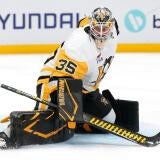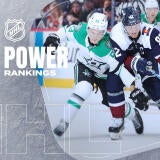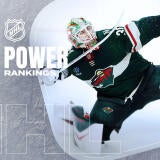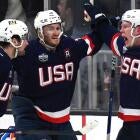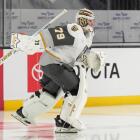Former NHL goalie shows how pads can get smaller and stay safe
Former NHL goaltender Corey Hirsch has some suggestions for what the league can do to make goalie equipment smaller and not lose any of its protective qualities. This, then, could lead to more offense.
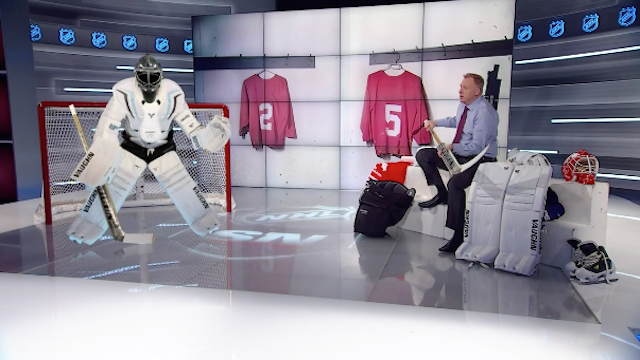
With goal scoring in the NHL still near an all-time low this season, there has been plenty of discussion about what the league can do to pump some offense back into the game.
The most common suggestions usually refer to increasing the size of the ice or the nets themselves.
The other alternative: Shrink the size of the goalie equipment.
All of these ideas have their share of critics and flaws. Bigger ice, for example, doesn't necessarily lead to more offense and may actually do more to hurt it. But when it comes to the goalie equipment, the biggest pushback will come from goalies themselves over concerns of player safety. And it is a very fair point. Players today are bigger, stronger and faster and are firing pucks at ridiculous speeds. You don't want to take away from that protection and expose them to potential injury.
But this week former NHL goaltender Corey Hirsch, now an analyst with Sportsnet, took some time to demonstrate how goalie equipment can be reduced, while still offering goalies all of the same protection they have now, if not add additional protection.
It's an interesting look at the equipment and how it is currently built, how much of it isn't really necessary for protecting them, and what can be done about it in the future.
How can goaltending equipment get smaller and stay safe? @CoreyHirsch has the answerhttps://t.co/c0OpdRK9wz
— Sportsnet (@Sportsnet) February 18, 2016
So far this season the average NHL game has had just 5.36 goals scored between two teams, a decline from where it was a year ago when it was at 5.46, continuing the downward trend the league has seen over the past decade.
There is no one specific reason for why scoring has continued to drop, but is instead a combination of factors, with the size of the goalies being a big part of it. Not only is the quality of goaltending in the league better today than it has probably ever been, they are also bigger than they have ever been. Add that to increased pad size, and players just don't have a lot of net to shoot at.
Along with that, the way way the game is officiated, leading to a decrease in power play opportunities, as well as the way coaches and their structured systems have made the game more defensive are also major factors.
In the late 1990s and early 2000s the NHL entered what has become known as "the dead puck era" when scoring across the league plummeted from where it was in the 1980s and early 1990s. It started to reach its lowest point going into the 2004 lockout. Coming out of that lost season the NHL made several rule changes, from eliminating the two-line pass to cracking down on neutral zone obstruction and interference and calling more penalties. For a couple of years, the changes worked. But over the past decade the league has allowed the obstruction and interference to slowly creep back into the game, while goalies keep getting bigger, faster, and more athletic.
The end result is a lot of games decided by 2-1 and 3-2 scores and a league where everybody keeps trying to think of ways to add more offense.



